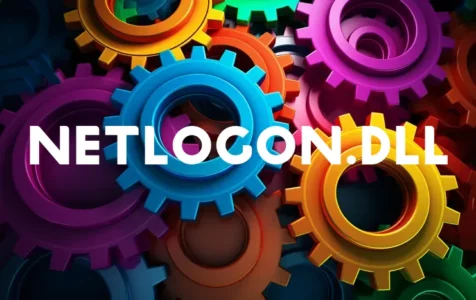The netlogon.dll file is a vital part of the Windows operating system, particularly in environments where computers are part of a domain, usually in business settings. This file is associated with the Net Logon service, which is responsible for verifying logon requests and registering, authenticating, and updating account information. Think of it as the gatekeeper that ensures only authorized users can access the network resources by verifying their credentials against the domain’s user database.
Is netlogon.dll Safe to Run?
Yes, netlogon.dll is safe to run as it is a legitimate Windows system file that is integral for logging into domain environments. However, it crucially depends on the file being in its original, unmodified state. If the file is altered or infected by malware, it could pose a security risk. This is why it is imperative to ensure that the version of netlogon.dll on your computer is the one provided by Microsoft and has not been tampered with by any third party.
Could netlogon.dll be a Virus or Malware?
Under normal circumstances, netlogon.dll is not a virus or malware. However, it is common for malicious programs to disguise themselves with the names of legitimate system files to avoid detection. Therefore, if a netlogon.dll file is located in an unusual directory or exhibits atypical behavior, it could potentially be a piece of malware. Running a reputable antivirus or anti-malware scan can help determine if the netlogon.dll file is legitimate or malicious.
Common Issues Associated with netlogon.dll
Common issues with netlogon.dll include:
Expert Tip: For smoother PC performance, consider using a PC optimization tool. It handles junk files, incorrect settings, and harmful apps. Make sure it's right for your system, and always check the EULA and Privacy Policy.
Special offer. About Outbyte, uninstall instructions, EULA, Privacy Policy.
– Error messages stating that netlogon.dll is missing or not found.
– The Net Logon service failing to start due to a corrupt netlogon.dll file.
– System instability or crashes related to netlogon.dll.
These issues can occur due to various reasons, including accidental deletion of the file, file corruption due to system errors, or as a result of malware infection.
How to Fix Issues Related to netlogon.dll
To fix issues related to netlogon.dll, follow these steps:
1. Conduct a System File Check (SFC) by using the `sfc /scannow` command in an elevated Command Prompt. This process will scan for corrupted system files and attempt to fix them.
2. Utilize DISM (Deployment Image Service and Management Tool) if SFC doesn’t resolve the problem. Run `DISM.exe /Online /Cleanup-image /Restorehealth` in Command Prompt with administrative privileges.
3. Perform a malware scan using a trusted antivirus or anti-malware tool. If an infection is found, follow the software’s recommendations to remove it.
4. If a particular application requires netlogon.dll, reinstall the application to ensure all necessary files, including netlogon.dll, are placed correctly in the installation folder.
5. In case you need to manually replace the netlogon.dll file, you should download it directly from the official Microsoft website or through Windows Update to ensure you get the correct and safe file version. Avoid using third-party sites for downloading system files, as they may not be secure.
Community Experiences
Community discussions pertaining to netlogon.dll reveal that users often face problems with the file in the context of network connectivity and security settings. For instance, difficulties in accessing shared files over a VPN connection and firewall rules are commonly reported issues. Many users have shared their experiences with resolving such problems by enabling specific services and modifying firewall rules related to netlogon.dll. It’s suggested to refer to community forums like Microsoft Answers for assistance and to share experiences with experts and fellow users.
Remember that system files, including netlogon.dll, are crucial to the proper functioning of your system, and any modifications should be carried out with caution. It’s also recommended to keep regular backups and create restore points before making significant changes to your system configurations.
